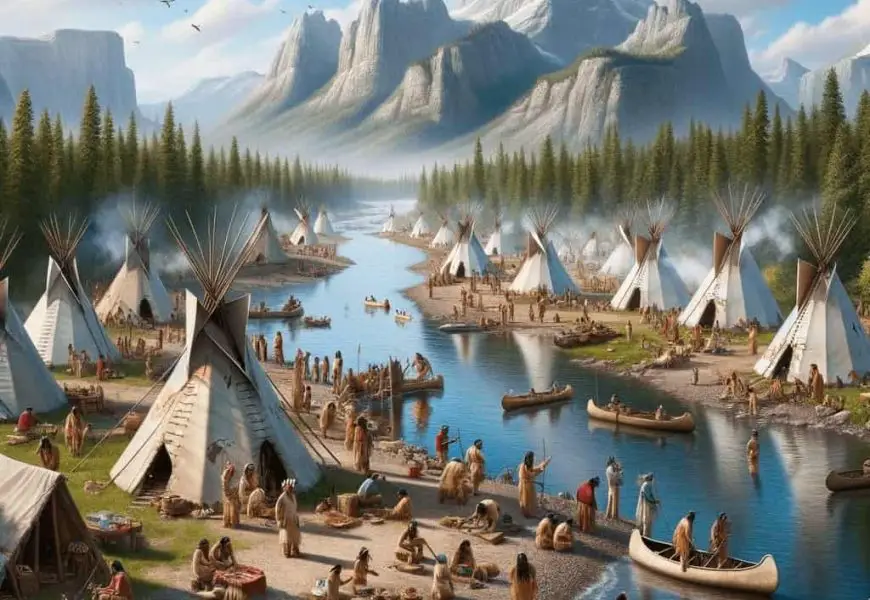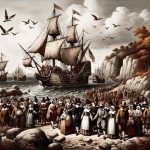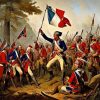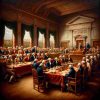Introduction to Native American Civilizations
The Native American past is like a rich fabric, with lines of variety, strength, and deep cultural meaning. Before Europeans arrived in the Americas, the profound impact of Native American civilizations was evident, with tribes thriving in diverse regions from the Arctic to the Amazon jungle. Their work can be seen today in the beautiful Mayan palaces, the Plains’ wandering tribes, and the Ancestral Puebloans’ cliff homes. This book goes into great detail about the many Native American societies, their religious views, their social structures, and the permanent mark they left on history.
Diversity of Native American Cultures
The term “Native American” encapsulates a vast array of distinct cultures. Across the Americas, over 500 indigenous nations thrived, each with its own unique language, traditions, and societal norms. The geographical diversity of the continents played a pivotal role in shaping these cultures. For example, while Plains tribes like the Lakota and Cheyenne adopted nomadic lifestyles following buffalo herds, the Ancestral Puebloans of the arid Southwest developed intricate irrigation methods.
Pre-Columbian Civilizations
Before European exploration, the Americas were home to complex societies whose achievements remain unparalleled.
- The Aztecs: Dominating Mesoamerica from their capital, Tenochtitlan (modern-day Mexico City), the Aztecs showcased remarkable prowess in agriculture, astronomy, and mathematics.
- The Maya Civilization: Inhabiting the tropical lowlands across Mexico and Central America, the Maya excelled in hieroglyphic writing and astronomical observations, leaving behind architectural marvels.
- The Inca Empire: Overseeing the Andean region, the Incas constructed an expansive infrastructure, with the iconic city of Machu Picchu as its crown jewel.
- Cahokia Mounds: Nestled in present-day Illinois, the city of Cahokia boasted impressive earthen mounds, rivaling some ancient Egyptian structures.
Mesoamerican Marvels
Mesoamerica birthed some of the most renowned pre-Columbian cultures:
- Aztec Ascendancy: Tenochtitlan epitomized urban planning and governance, with grand structures like the Templo Mayor at its heart. Their detailed codices and precise calendar system attest to their intellectual achievements.
- Mayan Mastery: Each of the Mayan city-states, presided over by a divine king, displayed unparalleled advancements in art, mathematics, and administration.
Cultural Mosaic of North American Tribes
From the Pacific coasts to the vast plains and dense Eastern woodlands, North America housed diverse indigenous cultures, each adapting uniquely to its environment. For instance, while Pacific Northwest tribes, such as the Haida, relied heavily on marine resources, Plains tribes like the Lakota turned to buffalo hunting.
European Encounters and Impacts
Europe’s arrival in the Americas precipitated profound changes for Native American societies:
- Epidemic Outbreaks: Diseases introduced by the Europeans decimated indigenous populations, with some estimates suggesting a mortality rate of up to 90%.
- Land Seizures: As European colonies expanded, indigenous lands were usurped, often under the pretexts of manifest destiny and “terra nullius.”
- Cultural Exchange: Interactions between Europeans and indigenous peoples facilitated the exchange of goods, knowledge, and traditions.
- Indigenous Resilience: Despite adversities, indigenous nations adapted, amalgamating elements from European cultures while preserving their heritage.
Modern Indigenous Communities
The spirit of Native American communities remains unbroken. Efforts to rejuvenate their cultural essence, safeguard tribal sovereignty, and further educational initiatives are in full swing. Contemporary indigenous scholars, artists, and activists continue to shape societal narratives, advocating for environmental conservation, social justice, and indigenous rights.
- Preservation and Revival of Indigenous Heritage: The resurgence of indigenous languages, arts, and oral traditions is central to the cultural preservation endeavors of Native American communities. Establishments like cultural centers and museums play a pivotal role in this revival, curating and disseminating the rich indigenous heritage.
- Artistic Expressions of Native Americans: Be it intricate beadwork, evocative pottery, exquisite basketry, or iconic silver and turquoise jewelry, Native American arts and crafts offer a window into their spiritual and cultural realms.
- Sacred Spaces and Spiritual Practices: For Native American communities, the land isn’t just a physical entity but a spiritual anchor. Sacred sites—mountains, rivers, ceremonial grounds—serve as both spiritual conduits and repositories of indigenous faith and practices.
Conclusion
The Native American civilizations, with their myriad cultures and unparalleled legacy, have etched an indelible mark on global history. As we traverse this tapestry, it becomes imperative to acknowledge and honor the profound contributions and timeless wisdom of these indigenous cultures. Let’s champion the cause of preserving their heritage and safeguarding their sacred spaces for generations to come.
As Native American Civilization, what other historical moments do you believe played pivotal roles in shaping the nation’s destiny? Share your thoughts and continue the exploration with other articles on our site, such as Pre-Colonial Era












I am actually grateful to the owner of this website who has shared this great paragraph at at this time.
Thank you for your appreciation! I’m glad you found the content helpful